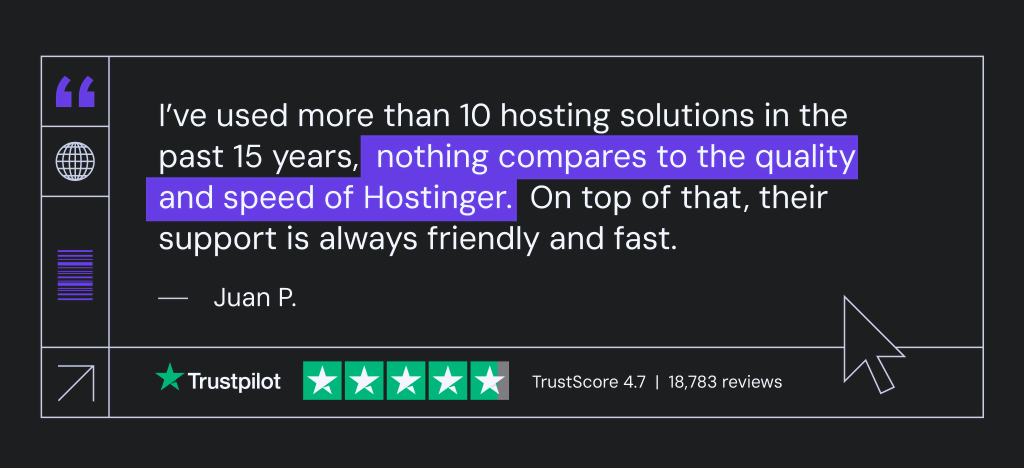How to Write a Request for Proposal + Tips to Get Responses

Writing a good request for proposal (RFP) is crucial when looking for outside vendors or contractors. As an RFP introduces your project requirements, expectations, and essential criteria to potential partners, you should write it in a concise and detailed manner.
In this guide, we will walk you through six steps of how to write a request for proposal that can attract quality responses. We’ll also share how the entire RFP process works, its main elements, best practices, and various business types that can benefit from using it.

What Is a Request for Proposal?
A Request for Proposal (RFP) is a formal business document that outlines upcoming project requirements, desired outcomes, evaluation criteria, and submission instructions. Simply put, it helps business owners find the right person to do a job.
How to Write a Request for Proposal
Let’s explore the step-by-step process of writing a compelling request for proposal document:
1. Determine What Your Business Needs
Before diving into writing RFP documents, it is crucial to brainstorm and identify your business’s specific needs and objectives.
Take the time to clearly define the project details, including its milestones, timelines, evaluation metrics, and any specific qualifications from potential contractors. This will provide the foundation for your RFP template and set the stage for attracting the ideal partner.
2. Introduce Your Business
Remember that your business introduction is often the first impression people will have of your company, so make it count.
The RFP’s introduction section should give potential business partners a clear understanding of your organization. Briefly describe the company’s history as well as its products or services, mission, and core values. You can also highlight key achievements demonstrating your company’s strengths and capabilities.
With such detailed information, prospective vendors will understand your company’s priorities, purpose, and focus. As a result, they will be able to align their proposals with your objectives, helping scale your business.
3. Share the Project Scope and Budget
Transparency is key when sharing the project scope and budget in your RFP document. This information lets vendors assess whether they can support your project goals and meet your financial expectations.
The project scope should provide a comprehensive description of the project, outlining all deliverables, objectives, and milestones. In addition, list requirements and set reasonable checkpoints for successful project completion.
It is equally important to provide potential contractors with a clear understanding of the budget range they are working with for the given project. Include payment terms to minimize miscommunication on the payment expectations before submitting their proposal.
It’s generally best to share as much information as possible to align expectations from the get-go. Doing so can help minimize unnecessary back-and-forth communication regarding the scope and budget.
4. Include the Selection Criteria and Process
In this section, clearly define the evaluation criteria you will use to assess vendor proposals. These criteria may include factors such as:
- Relevant experience. Describe the desired vendor’s experience related to the project outlined in the RFP.
- Technical expertise. Specify the project’s preferred credentials and business requirements and ask prospective vendors to demonstrate their expertise.
- Specific certifications. State any specific qualifications necessary for the project and ask vendors to provide evidence of their certificates.
- Past clients’ references. Review references from the vendor’s previous clients to verify their performance, reliability, and quality of work.
- Pricing. Include a section in the RFP where vendors can provide detailed pricing information, including cost breakdowns and any additional fees.
Additionally, explain the key details of the process, like milestones and timelines. This gives vendors a clear understanding of the subsequent steps in the RFP process and how you will evaluate their proposals.
5. Explain the Submission Requirements and Deadline
To avoid confusion, outline submission requirements in your RFP. Clearly state the preferred submission format, such as email or online form, and provide detailed instructions on any required documents or attachments.
Additionally, add the deadline for submission to ensure that vendors have a clear timeframe for preparing and submitting their proposals.
6. Check the RFP Before Sharing
Before sharing the RFP document with potential contractors, thoroughly review and check the document for accuracy and consistency. This final review helps ensure that your RFP is professional, error-free, and effectively communicates your project needs.
Look out for any grammatical errors, typos, and missing information that may impact the clarity of your requirements. Also, double-check all dates, numbers, and contact information to avoid misunderstandings during the proposal submission stage.
To sum up, following the above steps can help you create a comprehensive and compelling document that attracts quality responses from qualified bidders.
How Does the RFP Process Work
The RFP process is a multi-step journey that involves several key stages, from recognizing the need for external support to preparing the RFP template and finalizing a contract agreement with the chosen vendor or contractor.
By comprehending each step, you can effectively navigate the process and maximize your chances of finding the right partner for your project. Let’s explore each stage in detail:
Recognizing the Need
The RFP process begins with the understanding that you have limited resources and not enough full-time employees. Whether it’s a new system implementation or business website creation, recognizing the need for external assistance is crucial for undertaking large projects.
During this stage, it’s important to:
- Carefully assess your business operations to identify areas that require specialized expertise or additional resources beyond what your internal team can provide.
- Clearly define the goals, objectives, and scope of the project.
- Consider the specific outcomes you aim to achieve and any challenges you anticipate.
Recognizing the need and clearly defining the project requirements is a must for creating a successful RFP document.
Researching Potential Vendors
The next step is to conduct thorough research to find potential collaborators who meet your project requirements and business goals.
To do so, gather information about various vendors to assess their capabilities, experience, and track record. Here’s a quick guide:
- Start by seeking recommendations from colleagues, industry networks, or online communities.
- Explore industry-specific directories, platforms, and websites to find vendors specializing in your required services.
- Review their portfolios, case studies, and client testimonials to gain insights into their expertise and the quality of their work.
On top of all, evaluate the vendor’s reputation, financial stability, and values. Consider conducting interviews or scheduling consultations with shortlisted vendors to assess their understanding of your project and their ability to meet your needs.
Crafting the RFP
Crafting a well-structured RFP document is a critical step in the process. It acts as a blueprint for business partners to understand your requirements and submit comprehensive proposals. Consequently, you should ensure your RFP is clear, concise, and organized.
Here’s a general checklist on how to craft a good RFP:
- Introduce your business, outlining its background, mission, and values.
- Provide a detailed project description, including the scope, objectives, deliverables, and desired outcomes.
- Articulate your evaluation criteria and any specific qualifications or certifications you require from potential contractors.
- Outline the submission instructions, including the format, deadline, and any supporting documents you need vendors to provide.
- Have your contact person listed in case vendors have questions or require clarifications.
Sending the RFP
Once you finish writing the RFP document, it’s time to distribute it. Ensure that the RFP is easily accessible and clearly labeled to attract the attention of qualified bidders.
The easiest way is to post the RFP on relevant industry forums or platforms where prospective vendors actively seek project opportunities. This can include online marketplaces, professional networking platforms like LinkedIn, or freelance websites.
You can also send the RFP directly to vendors on your shortlist through email or a secure file-sharing platform. Personalize the communication to demonstrate your interest in their expertise and how they align with your project requirements.
Alternatively, consider hosting a pre-proposal conference where interested vendors can learn more about the project and ask questions. Besides enabling you to address any concerns, this interactive approach allows vendors to better understand your requirements and ease the bidding process.
Throughout the distribution phase, continue communicating with vendors. Effective communication between a client and provider during this stage contributes to a positive vendor experience and encourages quality responses.
Hence, remember to promptly respond to inquiries, provide clarifications if needed, and offer any additional information that may help potential partners prepare their proposals effectively.
Evaluating Proposals
Once the submission deadline has passed, it’s time to review and evaluate the received proposals. Refer to the predetermined criteria to ensure a fair assessment of each proposal and allow for effective vendor comparison.
Carefully review each proposal, paying attention to how well vendors understand your requirements, their proposed approaches, and their abilities to meet project objectives. Consider reaching out for clarifications if necessary.
You should also have evaluation metrics that align with your project requirements. To consistently evaluate each proposal, it’s essential to decide what criteria are the most important ones. This systematic approach ensures a fair evaluation of the proposals.
Negotiation and Contracting
After evaluating the proposals, select the most suitable vendor for further negotiation and contracting. As the RFP process is a collaborative endeavor, keep in mind to prioritize open communication and transparency to foster strong partnerships and achieve project success.
Generally, this process includes initiating discussions with the chosen candidate to clarify any remaining questions, finalizing the terms and conditions, and negotiating pricing and project timelines.
During the negotiation process, be open to compromise and ensure that both parties clearly understand expectations. Then, establish a solid contractual agreement that outlines:
- Deliverables
- Project milestones
- Payment terms
- Intellectual property rights
- Confidentiality clauses
Depending on your project and field of business, you might also need to include more details.
Once you reach an agreement, collaborate closely with vendors for a smooth transition from the RFP process to the project implementation phase. Maintain regular communication and provide the necessary support for a successful business partnership.
What Type of Business Uses an RFP?
RFPs are most commonly used by the following organizations:
- Big organizations. Companies with large projects or specific requirements often use RFPs to streamline the vendor selection process. For example, a multinational corporation looking to outsource custom coding or programming may use an RFP.
- Government agencies. These frequently rely on RFPs to procure goods and services, ensuring fair competition among potential vendors. For instance, a city government seeking a construction contractor for a public infrastructure project can use an RFP.
- Nonprofit organizations. Nonprofits often utilize RFPs to secure assistance for specific initiatives. For example, a nonprofit focused on environmental conservation may issue an RFP to engage a marketing agency for a campaign to raise awareness and funds for their cause.
- Technology projects. IT departments seeking technical solutions use RFPs to find suitable partners. For instance, a tech startup looking to launch a new site and build a brand may use an RFP to find the best web development agency.

What Are the Main Elements to Include in an RFP
A comprehensive overview of what your company is looking for is a crucial RFP element. It helps vendors determine if they are a good fit and serves as a baseline for preparing the request for proposal template.
Ensure to include the following key elements when writing an RFP:
- Project name. Provide a concise and descriptive name for the new project.
- Company background. Introduce your company name, what it offers, its mission, and other relevant background information.
- Project overview. Clearly explain the objectives, scope, and expected outcomes of the project.
- Requirements and deliverables. Detailing these aspects is crucial to make sure everyone is on the same page.
- Budget information. State the available budget range for the project.
- Evaluation criteria. Specify the factors that will be used to evaluate and compare vendor proposals.
- Submission instructions. Communicate the submission process, including its format and deadline.
Additionally, consider setting up a dedicated landing page on your website for easy RFP submission. On the page, embed a submission form supporting the required RFP file types.
What Are the Best Practices for Writing RFPs
To increase the effectiveness of your requests for proposals and attract quality responses, consider the following best practices:
Be Transparent About Your Needs and Roadblocks
Transparency is crucial when writing an RFP. Clearly communicate your business’s needs, challenges, and possible roadblocks to help vendors understand the project’s context. This transparency fosters trust and ensures people can provide tailored proposals.
Ask Questions to Potential Vendors
Encourage prospective contractors or vendors to ask questions about the RFP, clarifying any uncertainties. This open communication can help them provide more accurate proposals. Consider setting up a designated Q&A session or providing contact information for inquiries.
Make a Clear Evaluation Plan
Establish a clear evaluation plan before sending out the RFP. Determine the specific selection criteria and weightage you will use to assess vendor proposals. This structured approach will enable you to compare proposals objectively and select the most suitable partner.

Conclusion
Writing an effective request for proposals is critical when looking for external support for your business. Here’s a recap of the six-step process for creating a compelling RFP that attracts quality responses:
- Determine what your business needs. List the project’s basic details, like milestones, timelines, evaluation metrics, and any specific qualifications from prospective vendors.
- Create an introduction for your business. Include information regarding the company’s history, mission, core values, and key achievements to provide context for the organization’s purpose and focus.
- Share the project scope and budget. Give all the necessary details about these two aspects to align both parties’ expectations and minimize miscommunication.
- Include the criteria and selection process. Define the required experience, technical expertise, and specific certification to attract qualified bidders. Providing the subsequent steps gives vendors the big picture of the entire RFP process.
- Explain submission requirements and deadlines. The RFP requirements often include a specific file format and documentation. Meanwhile, submission deadlines help vendors estimate their RFP preparation time.
- Check the RFP before sharing. Ensure your RFP document is error-free and clearly communicates your needs.
On top of all, remember to be clear, concise, and transparent in your RFP to maximize your chances of finding the right vendor or contractor for your project. Good luck!
How to Write a Request for Proposal FAQ
Now, let’s address some frequently asked questions (FAQs) related to writing a request for proposal (RFP).
What Is the Difference Between RFP and RFI?
An RFP (Request for Proposal) is a formal document business owners use to solicit bids and proposals from vendors or contractors, outlining specific project requirements and evaluation criteria.
An RFI (Request for Information) is a preliminary document used to gather information about prospective contractors or their capabilities, often done before the RFP stage.
How Long Should a Request for Proposal Be?
The length of an RFP varies depending on the project’s complexity and the level of detail required. That said, we recommended keeping the document concise and focused, typically ranging from five to 20 pages.
What Is the Best Way to Share RFP?
It depends on your project and your target audience. Common methods include sending the RFP to selected vendors, posting it on relevant platforms or forums, or utilizing online RFP management systems. Choose a method that ensures easy accessibility for potential vendors.


Comments
November 27 2023
Thanks for all information my needs how to be write a RFP documents tender in professional way . thanks
December 01 2023
Hello there! I'm glad you found the information helpful ?